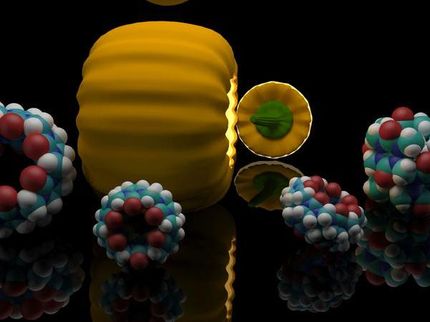In lab research, scientists limit autistic behavior
In a study Saint Louis University researchers report that treating mice with a compound, SR1078, reduces autistic behavior. The drug, developed by Thomas Burris, Ph.D., chair of pharmacology and physiology at SLU, and his lab, increases the expression of genes that are known to be low in the brains of autistic patients.
Autism spectrum disorder is a group of neurodevelopmental disorders that include difficulty with social interaction, communication and excessive repetitive behaviors. Currently, though there are medications available to treat some symptoms, no drug therapies exist that treat the underlying disorder itself.
While scientists don't fully understand the causes of autism, studies have demonstrated that certain genes tend to be low (underexpressed) in the brains of autistic children. RORa, a nuclear receptor, is also low in the brains of those with autism. An activator of gene expression, RORa has been shown to regulate the key genes that are underexpressed in autistic brains.
Burris's team developed a drug, SR1078, that increases the activity of RORa, and, subsequently, increases expression of the missing genes.
"We developed the first drugs that can target RORa effectively. SR1078 is, at this point, more of compound than a true drug. It will have to be optimized before it is ready for human testing," Burris said. "However, it is able to reach the brain, and that is a key factor."
Burris's group used a particular strain of mouse that displays autistic behavior and in this mouse model, animals display behavior such as overgrooming, fixation on inanimate objects and social deficits.
"Mice groom themselves constantly. We use videotape and count their grooming events. A normal mouse will groom itself around 125 times in 10 minutes. Mice with an autistic profile will groom themselves 250 times in that span due to excessive repetitive behavior."
When these mice were treated with the drug compound, Burris found both increased expression of the missing genes and reduced autistic behavior, with a significant decrease in repetitive grooming events.
Additionally, studies with human brain cells in culture also showed that the drug increases the expression of these genes, as well.
Next, the research team will study the mice's social activity and see what impact the drug has on this aspect of their behavior.
The research is in early stages and much more study will need to be completed, including clinical trials in humans, before it could be used as a therapy for children with autism. However, the research team is encouraged by their progress in a field that currently offers very few pharmacological options for those on the autism spectrum.
"There's such a paucity of autism therapies," Burris said. "There's not much out there, and approved drugs are antipsychotic compounds that treat symptoms.
"We are aiming to modulate genes that were dysregulated by the disorder. We hope this will be the start of developing therapies that will get closer to aiming at a root cause."




















































